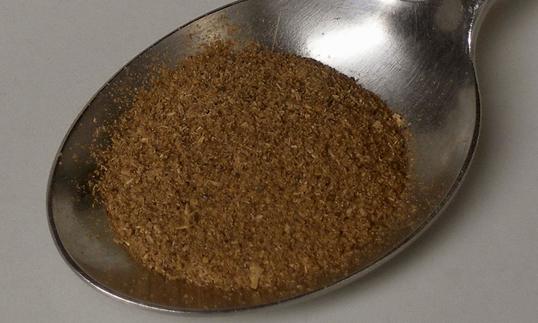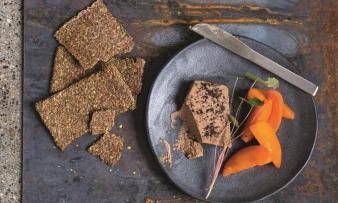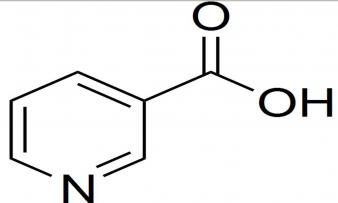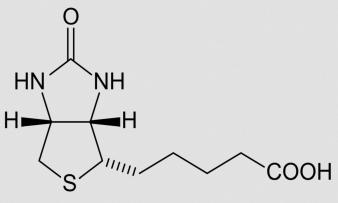Table of contents
Porcini mushroom powder consists of dried and ground porcini mushrooms ( Boletus edulis). Depending on the method of production, it is raw and of organic quality.
Use in the kitchen
Porcini mushroom powder is a valuable flavor carrier and natural flavor enhancer. Basically, mushroom powder for the kitchen is not restricted to one type of mushroom, but can consist of the respective edible mushroom or a mixture of different mushrooms. It therefore has its own individual flavor. When dried, typical edible mushrooms such as shiitake, morels, shimeji, velvet foot chanterelles, porcini, cultivated button mushrooms, giant button mushrooms, oyster mushrooms, chanterelles or king oyster mushrooms can be processed into a powder. Mushroom powder recipes are very varied. It can be used to refine sauces, soups, vegan pasta or rice dishes (e.g. risotto), soufflés, bread, pizza dough and savory toppings for cakes and flans. A vegan mushroom pâté or vegan mushroom pâtés are a good change from other spreads. The scent and taste of fresh mushrooms can be intensified with the powder of the respective mushroom. Spices such aspepper, parsley, coriander and garlic go perfectly with mushroom powder. The individual mushroom aroma can also be combined with dried herbs such as thyme, marjoram, rosemary or oregano.
The drying process intensifies the taste of the mushroom considerably. At the same time, the complexity of the volatile compounds increases, which significantly changes the aroma profile of the porcini mushrooms. A smoky aroma and spice-like taste become more prominent, while grassy and earthy notes are reduced. 1
Porcini mushroom powder is often a component of umami spices, along with tomato powder, sumac and tarragon. Umami is the fifth taste, alongside sweet, sour, salty and bitter, and describes a particularly spicy, savory, meaty or cheesy taste.
Depending on the production method, it can be of raw food quality. Powder can also be made from medicinal mushrooms such as Reishi. However, this is used primarily in naturopathy and less in cooking.
powder
Mushroom can be prepared in just a few steps. Make sure the mushrooms are organic or, if you are collecting them in the wild, carefully select them using a mushroom book or guide. To make porcini mushroom powder, use either sliced and dried mushrooms or fresh mushrooms, which you then chop up and dry before grinding. Drying is possible in a dehydrator or in the oven. To ensure that the powder is considered raw food, you should dry the mushrooms at a maximum of 42 °C. A dehydrator is better suited for this. After the drying process, grind the mushrooms into a powder in a blender or mortar, let it cool and fill it into an airtight screw-top jar.
Vegan recipe for mushroom pan with porcini powder
Ingredients (for 4 people): 500 g cultivated mushrooms, 1 onion, 2 cloves of garlic, 2 tbsp rapeseed oil (refined), 1 tbsp porcini powder (organic), 1 tsp soy sauce, ½ tsp salt, ¼ tsppepper.
Preparation: Clean the mushrooms and cut into bite-sized pieces. Peel the onion and garlic and chop finely. Heat the rapeseed oil in a pan and sauté the onion and garlic until translucent. Add the mushrooms and fry for about 10 minutes until cooked. Add the porcini powder and soy sauce and season with salt and pepper. Serve the vegan mushroom pan hot.
For an even spicier note, you can add ½ teaspoon smoked paprika and ¼ teaspoon chili powder.
Vegan recipes with porcini mushroom powder (raw) can be found under the note: " Recipes that have the most of this ingredient ".
| Not only vegans or vegetarians should read this: Vegans often eat unhealthily. Avoidable nutritional errors. |
Purchasing - Storage
Porcini powder and other mushroom powders are a spice that is available all year round and can be purchased mainly online, in health food stores or delicatessens. It is generally not available in major retailers such as Migros, Coop, Rewe, Edeka, Denner, Volg, Spar, Aldi, Lidl, Hofer, Billa or organic supermarkets such as Denn's Biomarkt and Alnatura. At best, comparable mushroom granules are available.
The availability of mushroom powder varies depending on the size of the store, catchment area, etc. Our recorded food prices for the DA-CH countries can be found above under the ingredient image - and by clicking you can see their development at various suppliers.
Storage tips
If packed airtight and stored in a dry place, mushroom powder will last for several months.
Ingredients - Nutritional values - Calories
Porcini mushroom powder provides 322 kcal of energy per 100 g. It contains 3.7 g/100g fat, 60 g/100g carbohydrates and is extremely rich in protein with 30 g/100g protein. 2 Porcini mushroom powder mainly contains B vitamins.
100 g of the powder contains 56 mg of niacin (vitamin B3), which covers 351% of the daily requirement. 2 It therefore contains about the same amount as brewer's yeast (57 mg/100g). Sea buckthorn berries contain particularly high levels of the vitamin (743 mg/100g). 17
Biotin (vitamin B7) is present in 100 g of porcini mushroom powder at 169 µg/100g (338% of the daily requirement). 2 Dried porcini mushrooms (94 µg/100g) and dried shiitake mushrooms (75 µg/100g) contain about half of this. Hazelnuts (62 µg/100g) or walnuts (36 µg/100g) are also good sources of this vitamin. 17
100 g of porcini mushroom powder contains 20 mg of pantothenic acid (vitamin B5). This covers 328% of the daily requirement. 2 It therefore contains about the same amount of the vitamin as dried shiitake (22 mg/100g). Avocados (1.4 mg/100g) or rye (1.5 mg/100g) and amaranth (1.5 mg/100g) are also good sources of the water-soluble vitamin, provided they are eaten raw. 17
Porcini mushrooms and the powder obtained from them are rich in secondary plant substances such as beta-carotene, flavonoids 3 and alkaloids, which have a high antioxidant effect. 4
The complete ingredients of porcini mushroom powder, the coverage of the daily requirement and comparison values with other ingredients can be found in our nutrient tables. In the article Nutrients explained you will get a detailed insight into the topic.
Health effects
Porcini mushrooms (raw) have been shown to have antioxidant, anti-inflammatory, anti-cancer, liver-protective, antiviral and anti-constipating properties. 5 However, many of these results have yet to be linked to study designs with living organisms, such as animals and clinical subjects. Since porcini mushroom powder is made up of ground dried porcini mushrooms, a similar effect can be expected. However, despite intensive research, we were unable to find any corresponding studies. Researchers have, however, come to the conclusion that the mushrooms retain their antioxidant effect if temperatures do not exceed 70 °C during the drying process. 6
Medicinal mushrooms are generally used for medicinal purposes. These are less suitable for cooking due to their taste or consistency, but they do contain valuable ingredients. Cordyceps species in particular, Reishi ( Ganodema lucidum) or Shiitake ( Lentinula edodes) can be taken in powder form as a dietary supplement, although Shiitake is also known as a popular edible mushroom.
Dangers - Intolerances - Side effects
Wild mushrooms can accumulate harmful heavy metals such as arsenic, lead, cadmium, mercury and selenium in their fruiting bodies. Contamination can occur both through the air (dust particles) and through the soil, although tolerance values only exist for cultivated mushrooms. The extent of the contamination depends on various location factors and environmental conditions. With regular and increased consumption, the toxic metals can cause chronic poisoning in humans. Especially if you collect mushrooms yourself, you should not use specimens near industrial plants, motorways or agricultural areas treated with pesticides. 7
Folk medicine - natural medicine
In traditional Chinese medicine ( TCM), the use of fresh and dried mushrooms as well as powder and extracts derived from them has a long history. Reishi in particular has a history of economic and medical significance in Asia that goes back more than 4,000 years. 8 Boletus edulis is also used in China to treat lumbago, leg pain and limb pain. 9
Ecological footprint - animal welfare
The ecological footprint of a food depends on various factors. The type of agricultural production (conventional vs. organic), seasonal, regional or domestic production or import by truck, ship or plane, different types of packaging and whether the goods are fresh or frozen all play a decisive role. 10
1 kg of raw mushrooms (without further information on the type) has a carbon footprint of around 0.47 kg CO 2 eq/kg. In Denmark, pickled mushrooms from a can are calculated at 0.70 kg CO 2 eq/kg. 11 In Italy, mushroom powder made from porcini mushrooms has a value of 3.3 kg CO 2 eq/kg. 12 Since wild mushrooms are not grown commercially, neither artificial irrigation nor other interventions in the natural ecosystem are necessary. It is therefore assumed that wild mushrooms and products processed from them have a lower ecological footprint.
The rule of thumb is: the more you process a food, the worse its ecological footprint is. This is why mushroom powder tends to have a worse carbon footprint than fresh, unpackaged, seasonal and regional mushrooms. Collecting the mushrooms yourself and processing them is definitely the most environmentally friendly option.
Worldwide occurrence - cultivation
Porcini mushrooms, also known as common porcini ( Boletus edulis), originally come from Europe, but are now a popular edible mushroom worldwide. 5 Commercial cultivation of porcini mushrooms has not yet been successful. Since porcini mushrooms are mycorrhizal fungus that grow in symbiosis with the roots of spruce or oak trees, growing them yourself is very difficult. 13 Currently, commercially available porcini mushrooms or products made from them, such as porcini powder, come from collections of wild specimens.
Industrial production
The industrial production process of porcini mushroom powder varies depending on the producer. In principle, however, the following steps can be used in a production line: 14
- Sorting and cleaning whole mushrooms
- Chopping the mushrooms in a mill
- Polysaccharide extraction (decoction of the mushrooms)
- Alcohol extraction (extraction of triterpenes, e.g. for Reishi and Chaga)
- Vacuum drying (concentration)
- Spray drying of concentration
- Sieve the finished powder for consistency
- Laboratory tests for quality control
- Packaging and distribution
Further information
The common porcini mushroom ( Boletus edulis) belongs to the genus Boletus of the family Boletaceae.
Alongside plants and animals, fungi are recognized as a separate kingdom. As decomposing organisms (decomposers), they play an important role in the material cycle of ecosystems, together with bacteria. By breaking down wood, dried leaves, fruits, horn and fats, they return nitrogen compounds and other substances to the soil so that animals and plants can use them again. It is not for nothing that they are considered the "nourishers of the forest." Fungi do not produce photosynthesis and feed on dead or living organisms. 15
Alternative names
Mushroom powder is known in English as "mushroom powder". Porcini mushroom powder is available as "porcini mushroom powder", where the English word comes from the Italian "porcino" for "porcini mushroom".
Other uses
Mushrooms have been valued for centuries as a traditional source of natural bioactive compounds and have recently been used as ingredients in the cosmetics industry. Numerous mushrooms and their ingredients are known for their positive effects on skin and hair. These effects are due to the phenols, polyphenols, terpenoids, selenium, polysaccharides, vitamins and volatile organic compounds they contain. These compounds have excellent antioxidant, anti-aging, anti-wrinkle, skin lightening and moisturizing effects. 16
Bibliography - 17 Sources
| 1. | Zhang H, Pu D, Sun B, Ren F, Zhang Y, Chen H. Characterization and comparison of key aroma compounds in raw and dry porcini mushroom (Boletus edulis) by aroma extract dilution analysis, quantitation and aroma recombination experiments. Food Chemistry. 2018;258:260–8. |
| 2. | ÖNWT. Österreichische Nährwerttabelle. Steinpilze getrocknet Granulat (Steinpilzpulver). |
| 3. | Sánchez C. Reactive oxygen species and antioxidant properties from mushrooms. Synth Syst Biotechnol. 2016;2(1): 13–22. |
| 4. | Ribeiro B, Lopes R, Andrade PB, Seabra RM, Gonçalves RF, Baptista P, u. a. Comparative study of phytochemicals and antioxidant potential of wild edible mushroom caps and stipes. Food Chemistry. 2008;110(1):47–56. |
| 5. | Tan Y, Zeng NK, Xu B. Chemical profiles and health-promoting effects of porcini mushroom (Boletus edulis): A narrative review. Food Chemistry. 2022;390:133199. |
| 6. | Guo L, Lan N, Li H, Xiang P, Kan H. Effect of hot air drying temperature on the quality and antioxidant activity of Boletus edulis Bull.: Fr. J Food Process Preserv. 2021;45(6). |
| 7. | Neukom HP. Toxische Metallbelastung in wildgewachsenene Speisepilzen: Gesundheitsgefährdung für den Konsumenten? Schweizerische Zeitschrift für Pilzkunde. 2005; 83(4):166–173. |
| 8. | Ahmad R, Riaz M, Khan A, Aljamea A, Algheryafi M, Sewaket D, u. a. Ganoderma lucidum (Reishi) an edible mushroom; a comprehensive and critical review of its nutritional, cosmeceutical, mycochemical, pharmacological, clinical, and toxicological properties. Phytotherapy Research. 2021;35(11):6030–62. |
| 9. | Dai YC, Yang ZL, Cui BK et al. Species Diversity and Utilization of Medicinal Mushrooms and Fungi in China (Review). International Journal of Medicinal Mushrooms. 2009; 11(3):287-302. |
| 10. | Reinhardt G, Gärtner S, Wagner T. Ökologische Fussabdrücke von Lebensmitteln und Gerichten in Deutschland. Institut für Energie- und Umweltforschung Heidelberg ifeu. 2020:1-22. |
| 11. | Concito. Denmark's green think tank. The big Climate Database. Version 1. Mushroom. |
| 12. | Carboncloud com: Porcini Mushroom Powder. 2023. |
| 13. | Gartenjournal de: Steinpilze züchten: Ist es möglich und wie geht es? 2023. |
| 14. | Harmonic Arts: Mushroom Powder Production Tour - Extraction & Testing. - Harmonic Arts. 2020. |
| 15. | NABU Naturschutzbund Deutschland: Die Recycling-Spezialisten unserer Wälder - Pilze sind allgegenwärtige Nährstofflieferanten. |
| 16. | Wu Y, Choi MH, Li J, Yang H, Shin HJ. Mushroom cosmetics: the present and future. Cosmetics. 2016;3(3):22. |
| 17. | USDA United States Department of Agriculture. |









Comments